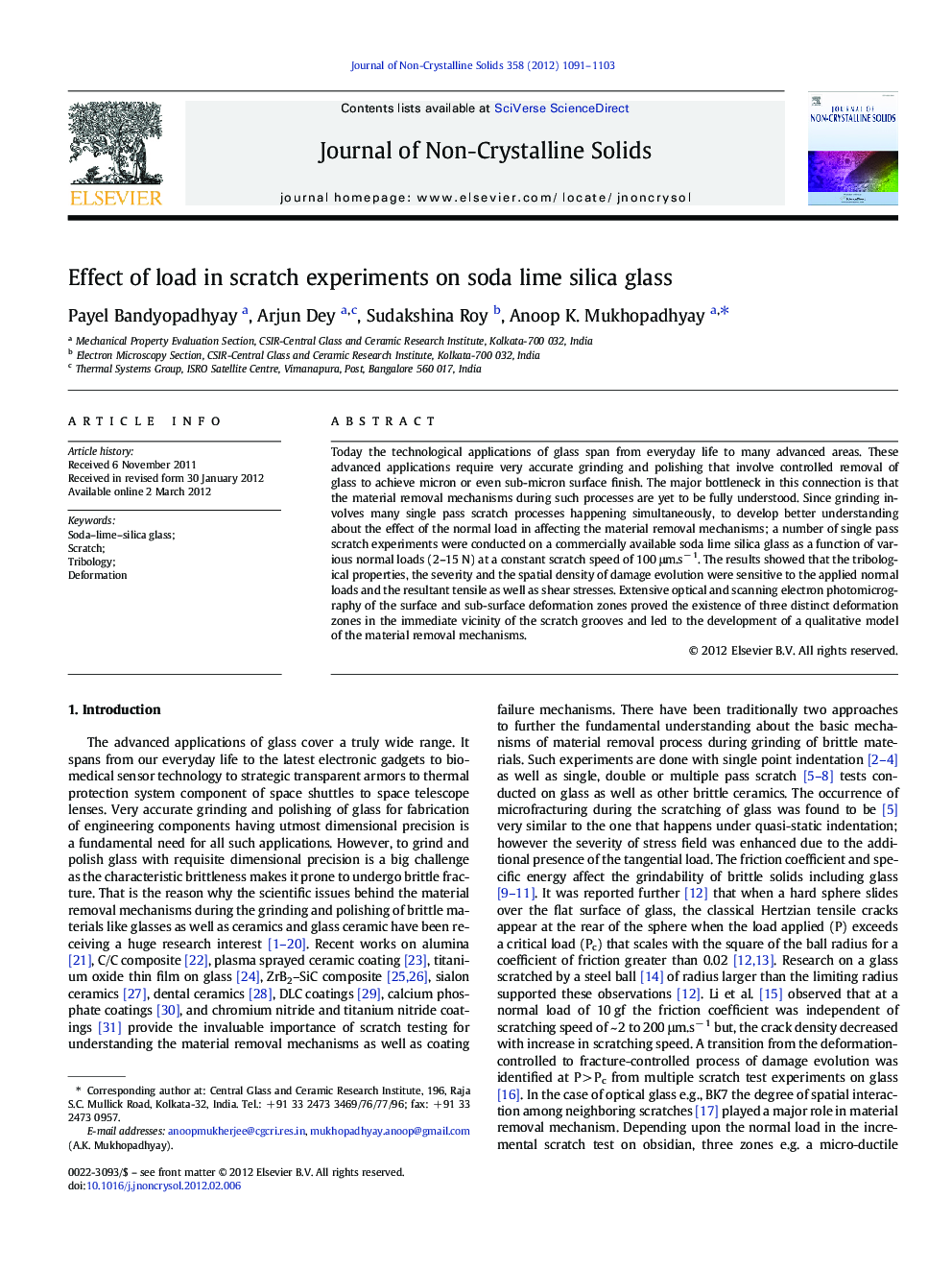| Article ID | Journal | Published Year | Pages | File Type |
|---|---|---|---|---|
| 1482224 | Journal of Non-Crystalline Solids | 2012 | 13 Pages |
Today the technological applications of glass span from everyday life to many advanced areas. These advanced applications require very accurate grinding and polishing that involve controlled removal of glass to achieve micron or even sub-micron surface finish. The major bottleneck in this connection is that the material removal mechanisms during such processes are yet to be fully understood. Since grinding involves many single pass scratch processes happening simultaneously, to develop better understanding about the effect of the normal load in affecting the material removal mechanisms; a number of single pass scratch experiments were conducted on a commercially available soda lime silica glass as a function of various normal loads (2–15 N) at a constant scratch speed of 100 μm.s− 1. The results showed that the tribological properties, the severity and the spatial density of damage evolution were sensitive to the applied normal loads and the resultant tensile as well as shear stresses. Extensive optical and scanning electron photomicrography of the surface and sub-surface deformation zones proved the existence of three distinct deformation zones in the immediate vicinity of the scratch grooves and led to the development of a qualitative model of the material removal mechanisms.
► Effect of tribological parameters as a function of loads on soda lime silica glass. ► Shear induced deformation and microfracture observed during single pass contacts. ► Three distinct sub-surface deformation zones. ► Proposed a qualitative model describing deformation mechanism.
